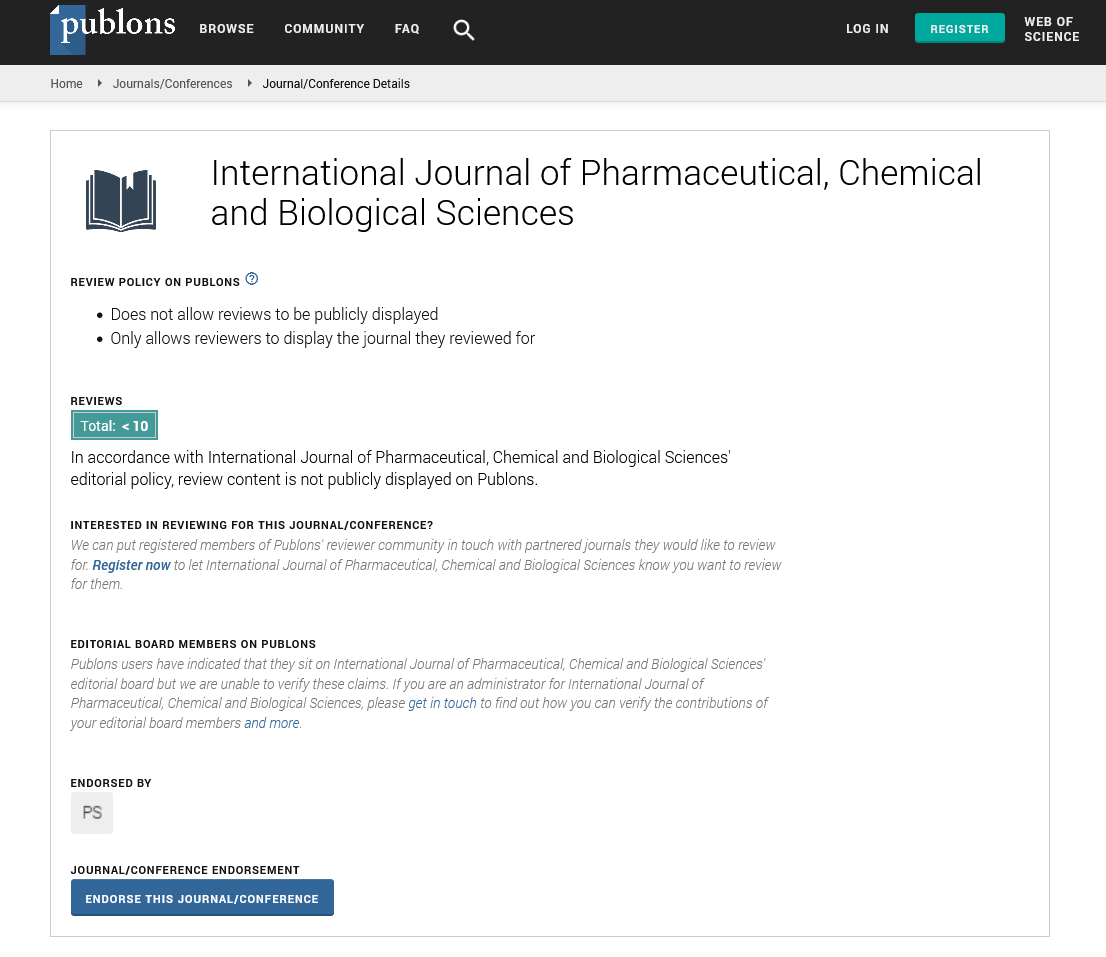Short Communication - International Journal of Pharmaceutical, Chemical and Biological Sciences ( 2023) Volume 13, Issue 3
Proteomics: Decoding the Proteins that Shape Life
Joseph Tribbiane*Joseph Tribbiane, Division of Nephrology, Indiana University School of Medicine, USA,
Received: 30-Aug-2023, Manuscript No. ijpcbs-23-113677; Editor assigned: 01-Sep-2023, Pre QC No. ijpcbs-23-113677 (PQ); Reviewed: 15-Sep-2023, QC No. ijpcbs-23-113677; Revised: 20-Sep-2023, Manuscript No. ijpcbs-23-113677 (R); Published: 27-Sep-2023, DOI: DOI: 10.36648/2471-9668-13.3.4
Introduction
Proteomics is the cutting-edge field of science that investigates the complex and intricate world of proteins within living organisms. Often referred to as the next frontier of biological research after genomics, proteomics seeks to unravel the mysteries of how proteins function, interact, and influence the multitude of processes that define life. In this article, we’ll embark on a journey into the fascinating realm of proteomics, exploring its history, methods, applications, and its profound impact on various scientific domains. Before delving into proteomics, it’s crucial to understand the fundamental role of proteins in living organisms. Proteins are the workhorses of cells, serving as structural components, enzymes catalyzing biochemical reactions, messengers, and regulators of various cellular functions. They are encoded by genes in DNA, and their three-dimensional structures are critical to their functions. The study of proteins has a long history, dating back to the late 18th century. However, it wasn’t until the latter half of the 20th century that proteomics truly emerged as a distinct field. Techniques like electrophoresis and mass spectrometry paved the way for the comprehensive analysis of proteins. In the 1970s and 1980s, two-dimensional gel electrophoresis became a groundbreaking technique for separating and visualizing complex protein mixtures. The development of mass spectrometry techniques, particularly tandem Mass Spectrometry (MS), has been pivotal in modern proteomics. It enables the identification and quantification of proteins with high accuracy [1,2].
Description
Proteomic studies often begin with the extraction and preparation of proteins from cells or tissues. This step is crucial to ensure the reliability of subsequent analyses. This powerful tool is at the heart of proteomics. It involves ionizing proteins and measuring their mass-to-charge ratios, enabling protein identification and quantification. Gel-based techniques are still used for certain proteomic applications, such as separating proteins by size (SDS-PAGE) or Isoelectric Point (IEF). Once proteins are separated and ionized, databases and algorithms are employed to identify them by matching mass spectra to known protein sequences. Techniques like SILAC, iTRAQ, and TMT allow for the quantification of protein abundance in different samples, shedding light on dynamic cellular processes. Proteomics plays a pivotal role in understanding the molecular basis of diseases. It has identified potential biomarkers for conditions such as cancer, Alzheimer’s disease, and diabetes. By elucidating the mechanisms of action of drugs and their impact on the proteome, proteomics accelerates drug discovery and development. Studying protein-protein interactions and posttranslational modifications helps elucidate cellular functions and signaling pathways. Proteomics aids in crop improvement, understanding plant stress responses, and developing genetically modified organisms. In the era of personalized medicine, proteomics can guide treatment decisions by analyzing a patient’s unique protein profile [3,4].
Conclusion
Proteomics, the study of proteins on a global scale, is revolutionizing our understanding of life, diseases, and drug development. It has transcended the confines of laboratories and found applications in fields as diverse as medicine, agriculture, and biotechnology. As technology continues to advance and our understanding of proteins deepens, proteomics is poised to drive further breakthroughs that will shape the future of science and medicine. It is a discipline at the forefront of scientific discovery, offering profound insights into the molecules that underpin life itself.
Acknowledgement
None.
Conflict Of Interest
None.
References
- Schey KL, Luther JM, Rose KL. Proteomics characterization of exosome cargo. Methods 2015; 87:75-82.
[Crossref] [Google Scholar] [PubMed]
- Lamparski HG, Metha-Damani A, Yao JY, Patel S, Hsu DH, et al. Production and characterization of clinical grade exosomes derived from dendritic cells. J Immunol Methods 2002; 270:211-226.
[Crossref] [Google Scholar] [PubMed]
- Raposo G, Stoorvogel W. Extracellular vesicles: Exosomes, microvesicles, and friends. J Cell Biol 2002; 200:373-383.
[Crossref] [Google Scholar] [PubMed]
- Niel G, Angelo DG, Raposo G. Shedding light on the cell biology of extracellular vesicles. Nat Rev Mol Cell Bi 2018; 19:213-228.
[Crossref] [Google Scholar] [PubMed]

